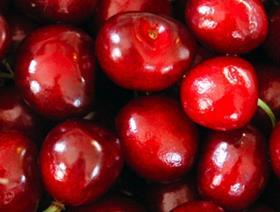
Chile’s cherry sector has been increasing plantings at a rate of around 1,000ha a year, but last season and to an extent the one before, Chile’s harvest had been held back by the weather.
This year, however – amidst a percussion section of growers knocking on wood – Chile’s cherry industry thinks the harvest might hit its so far latent stride.
As of mid-October, the upper forecast for the season is sitting at 12m cartons. At the lower end, the prediction is still a sizable 10.5m cartons. Both those figures represent a significant increase over 2009/10’s 6.7m cartons, and the 7.7m cartons of 2008/09.
Such an increase in production will translate to a sizeable growth in exports. Based on those forecasts, Chile is expected to ship out 53,000 tonnes of cherries over the 2010/11 season, according to Chilean produce industry consultant iQonsulting, a rise of around 60 per cent on last year.
“The reason is that there have been significant increases in plantations, about 1,000ha per year of good technology,” said Manuel Alcaino, president of fresh produce market analyst Decofrut.
Apart from older plantings being replaced, new orchards are being planted in high density – 1,000 to 1,200 trees per ha – with self-fertile varieties such as Lapin, which are better yielding than older cultivars.
“Last two seasons there has been very little winter chilling, and the productive potential could not express itself,” Mr Alcaino told Fruitnet.com. “This past winter there was plenty of cold, therefore we expect full production provided there are no rains, frosts or other climatic disasters.”
But that’s a big if, according to some.
“It is still way too early to take conclusions on how the next cherry season will be,” Germán Illanes of grower-exporter Unifrutti told Fruitnet.com. He said a few frosts in early October may have knocked production back somewhat, and there was still plenty of opportunity for bad weather.
“Basically there is still a long way to go until the fruit is ready. We only need to remember what happened during the last two seasons where the ‘flood’ never showed up.”
If the predicted 12m boxes do run the gauntlet until harvest-time, packing capacity is expected to be the major bottleneck.
Chile’s cherry industry has already experienced a drastic season-to-season increase in production. In 2008 the crop went from 4.7m to 8.7 cartons in one season, which put significant pressure on packhouses.
“After that, a lot of investment has been done in the sector and we should be reasonably OK with the installed capacity,” explains Mr Alcaino. “Cold storage of course is no problem because the capacity is underused in cherry season, however labour could be an issue.”
The outlook for exports is unclear at this stage. Markets in Europe and North America continue to face economic uncertainties, and although the situation appears to have improved since last year solid demand is by no means a sure thing.
“The US and Europe are important markets for Chilean cherries, however the unresolved financial situation in Europe might not be the best destination for a product that is essentially expensive and considered more a luxury than a necessity item, such as apples and bananas,” said Mr Alcaino.
But despite similarly depressed markets in 2009/10, last season was a particularly good earner for Chile’s cherry exporters, and the industry is well financed to face new challenges.
Asia is also expected to continue to grow as a destination for Chilean cherries. As of last season, Asia accounted for 42 per cent of exports, taking pole position from the historic leader, the US. China/Hong Kong represents the strongest market in Asia for Chilean cherries, according to Mr Alcaino.
“Last season exports decreased an overall 13 per cent and all markets decreased their imports, except China/Hong Kong, which saw their volumes increase by 22 per cent.”



